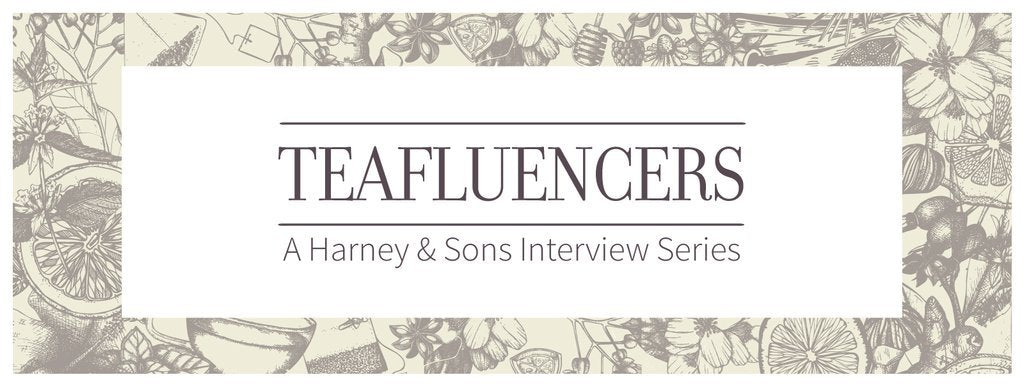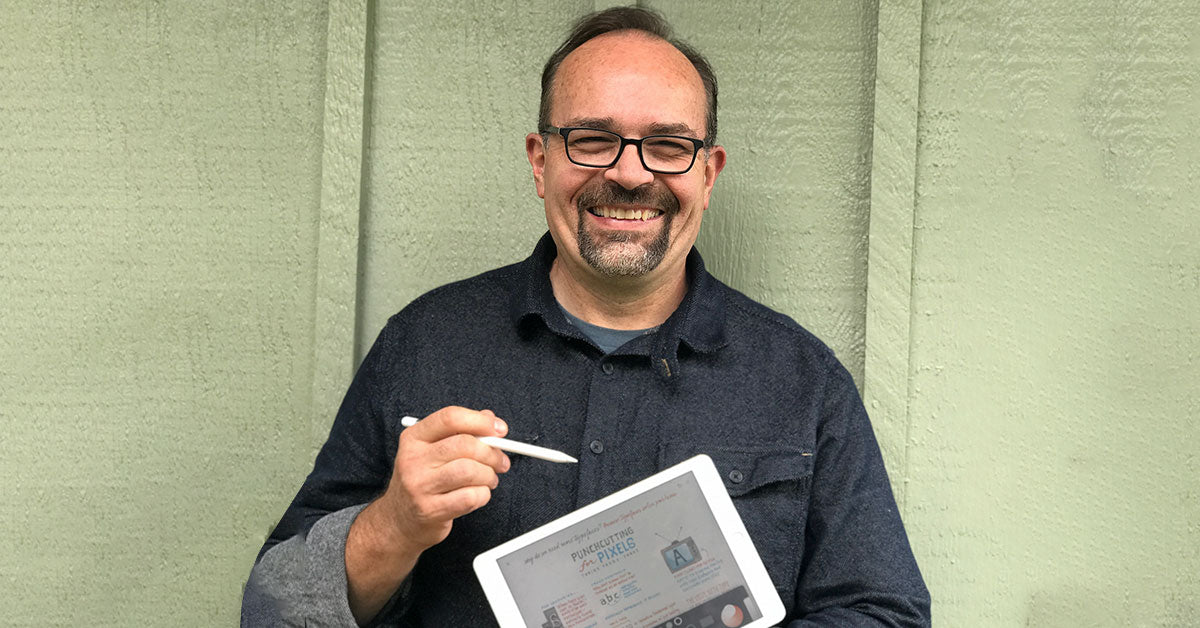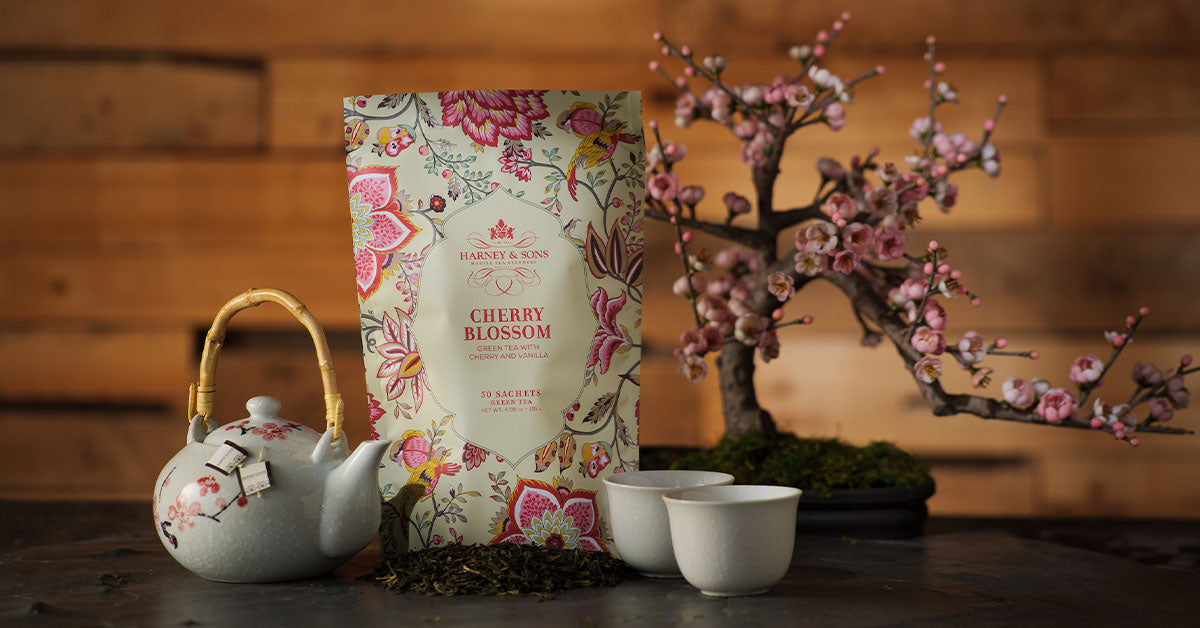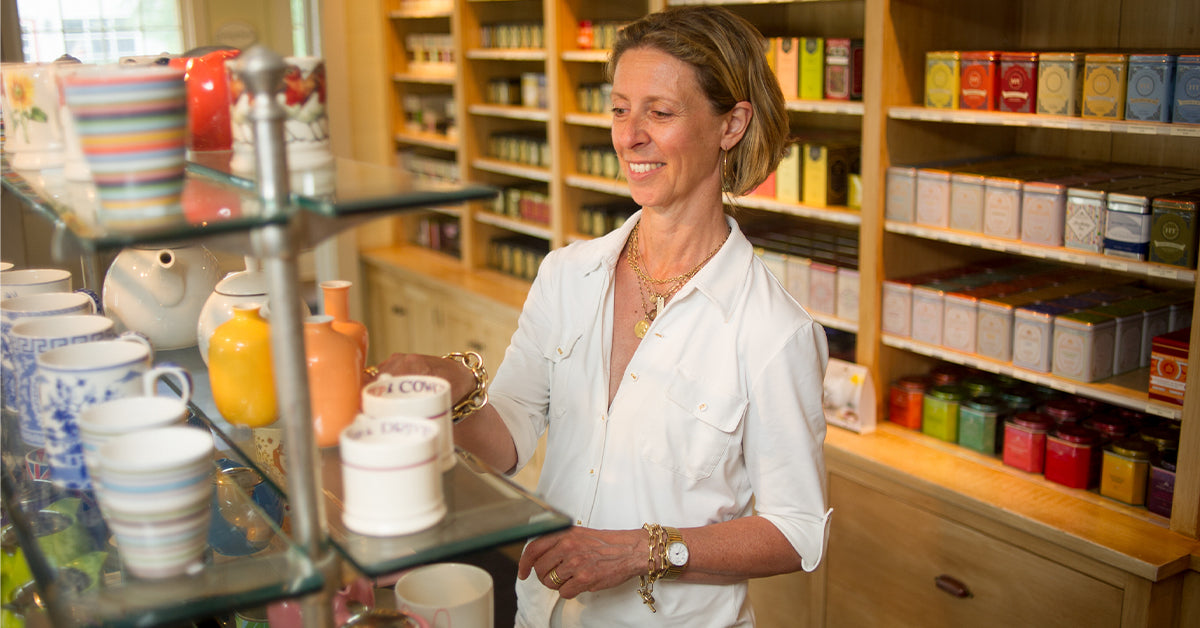
Mike Rohde
Designer, Author, Teacher and Illustrator
Holy #2 pencil, folks! Our March Teafluencer, Mike Rohde, is bursting with creativity and energy. His enthusiasm and spirit fairly leap off the page, just like his incredible sketchnotes. Get ready to be inspired and impressed by Mike’s skills and his obvious heart for teaching and sharing. And make sure to check out his Gongfu tea ceremony sketchnote, it’s very cool!
Harney: Tell us a little about you. Where are you from, educational/professional background, where you live, family, etc.
Mike: I’m Mike Rohde, a designer, author, illustrator and teacher. I’m from the Milwaukee area, right on Lake Michigan, about 90 miles north of Chicago.
Milwaukee is the home of Harley-Davison motorcycles, but as a surprise to many, Milwaukee features great culture, restaurants, craft beers, coffee shops and a huge parks system that spans the city. Milwaukee is on Lake Michigan, so the place to be on hot summer days is right at the beach, where the temperatures are easily 10 degrees cooler.
Professionally, I’m a designer, focused on user experience (UX) and user interface (UI) for software tools at the company I work for, PKWARE. I have experience in print, web and service design in past lives too, so I’m a little old school. My job as a UX designer is to understand and represent the users of the software I design for, so that the tools we make become easier for our customers to use day to day. I help make how the software works and looks make more sense for those who live in our tools daily.
I’m also the author of two books: The Sketchnote Handbook and The Sketchnote Workbook, which teach you how to create the visual notes I call sketchnotes. I teach these techniques to students around the world — now online but I hope to get back to teaching in person again soon. I’ve had the pleasure of illustrating several bestselling books like REWORK, REMOTE, The Little Book of Talent, Law Firm SEO and The $100 Startup. My illustrations help amplify the author's words and concepts so they are more memorable for readers.
I’m a husband to my wife Gail and the father of three kids who are all very different from each other: a 9-year-old son, 12-year-old daughter, and a 19-year-old son. They’re all great kids.
Harney: So, sketchnotes! You’re the best-selling author of two books on sketchnotes, The Sketchnote Handbook and The Sketchnote Workbook. Let’s start with the basics: what are sketchnotes? How did they originate?
Mike: Sketchnotes are rich visual notes created from a mix of handwriting, drawings, hand-lettering, shapes, and visual elements like arrows, boxes and lines. Sketchnotes don't require special drawing skills, which means anyone can create them. Sketchnotes are a way to listen and visually synthesize and summarize ideas you’re hearing that are meaningful to you.
In late 2006, note-taking had become a burden. I’d become a great verbatim note-taker, but I hated my process of note-taking. I took overly detailed notes in large, lined notebooks, with pencil, so I could erase any mistakes. I was like a court reporter, trying to capture every detail — but I wasn’t comprehending and always felt I was missing something. Even worse, I never wanted to review my notes because they were overwhelming.
So, in early 2007, I decided to experiment with a new approach. I attended a design conference and limited my tools to a small pocket-sized Moleskine notebook and a gel pen. The notebook was too small to write everything I had been capturing in the large book, and the pen made me stop and consider what went on the page, since I couldn’t erase mistakes.
These limitations led me to less writing and more being in the moment to listen, analyze and capture the big ideas I was hearing, seeing and thinking about. I had more time for lettering and drawing, so I called this visual note-taking process “sketchnotes” because it was a mix of sketches and notes together. I was having fun taking notes again, and realized there must be others out there who would benefit from this new idea.
I continued experimenting and began teaching others my sketchnoting techniques. Eventually, I had an opportunity to write two books on sketchnoting and that led to teaching the idea and techniques all around the world.

Harney: When did you first become interested in sketchnoting? Did you know how to draw before you started?
Mike: It’s funny — after a year of sketchnoting, I came across some of my old notebooks from college and found that the elements of sketchnoting were in those notes! I’d been practicing the ideas loosely even back then.
I’m fortunate to be someone who has drawn my whole life, never deterred from it in school. For me, drawing is a part of who I am. However, it took me getting to the point of being frustrated in 2006 to remember this way of blending images with words again I’d used before.
Harney: Is there any connection between sketchnoting and doodling? Lots of people draw while in a meeting or on the phone and refer to it as doodling. Are they the same at all?
Mike: I think doodlers are great candidates for sketchnoting! In schools, I’ve talked with many teachers who are excited about sketchnoting as a way to channel the desire of kids to doodle and visualize into a way for them to understand ideas and remember the ideas they’ve learned.
Here’s a recent article from Faculty Focus on sketchnoting in higher education to give you an idea of what’s happening all over the education space. Even grade school teachers are beginning to integrate sketchnoting as a note-taking strategy for their students. It’s awesome!
Harney: How do you find sketchnoting to be beneficial versus just taking written notes?
Mike: I believe sketchnotes take advantage of your whole brain’s processing power. By combining images with words, your mind is being fully applied to capture and analyze ideas. Because of this whole-mind process, you retain more information when you need to recall it.
Visuals are also a great reference for memory, because of the internal mapping you do to create a sketchnote. When you review your sketchnote, the combination of images and words are a physical representation of what you've stored in your memory. Finally, being freed to draw and write your ideas on the page is fun! One of the reasons I kept sketchnoting after that 2007 experiment is because I enjoy the process as well as the results.
Harney: You sketchnote a lot of things, like meals at a restaurant. Why?
Mike: I’m an experimenter by nature. Once I knew that sketchnoting worked for me, I began wondering where else the concept could be applied beyond sketchnotes from conference presentations and meetings. I realized it could be powerful for ideation, capturing processes I want to learn or share, experiences like sporting events, travel or food.
Whatever I want to engage with, remember or share, a sketchnote is very often the best way to make that happen.

Harney: Tell us about the Sketchnote Army, please! What is it, and how does one join?
Mike: Sketchnote Army was created in 2009 because I saw there was no one place to find all of the sketchnotes being created around the world. You’d have to search social media of the time, and it was very inconsistent. So I started a site where I could share what I was seeing on the web in a single place. Then I had friends in the sketchnoting community join me to help discover and post articles about what we were finding.
A few years in, I began a podcast to understand what makes visual thinkers who create sketchnotes tick. I felt there was an opportunity to let the creators speak about their origin stories and process as well as share favorite tools and tips with the sketchnoting community. Eleven seasons later, the podcast is stronger than ever, with over 100 episodes and new episodes being posted to YouTube with video in season 11! Now we have a Slack channel where the community hangs out and even offers a daily prompt to practice creating icons! Check us out!
Harney: You also teach and lead workshops. What do you enjoy about teaching?
Mike: The most enjoyable aspect of teaching is seeing someone start at the beginning of an hour saying “I can’t draw” and ending the hour being excited that they can draw and create much more than they thought! Seeing the twinkle in their eyes is the best thing ever.
Harney: You recently led a workshop on Meditative Sketchnoting. Does sketchnoting have some meditative, calming, relaxing aspects?
Mike: That Meditative Sketchnoting workshop with Ben Norris was fantastic! Ben led that because he’s been experimenting with the idea for a while and thought it would be good to guide students into that practice.
I believe sketchnoting does have a meditative quality. I get into a flow state where I’m almost inside the ideas I’m hearing and those ideas are flowing out on the page with words and images. Having a quiet moment to be with your thoughts and then expressing them on a page is a little gift to yourself.
Harney: You also teach handwriting techniques. Your sketchnotes show that you have beautiful lettering skills. How did you learn those, and can someone with horrible handwriting be taught at a later stage in life to improve their handwriting? Do you have to break out the paper with the large-spaced lines and your #2 pencil?
Mike: Funny you ask about this because in high school and college I only wrote in ALL CAPS like architects do — not sure why. As I started working as a designer, I wanted to change to upper and lowercase letters — so I began an intentional practice, and it took a few months to make the shift. Some simple suggestions for those wanting to improve handwriting:
-
Slow down! Very often that messiness comes from writing too quickly. I find myself doing this from time to time and remind myself to slow it down — and the letters immediately improve.
-
Find handwriting you love and copy it. Having something to aim for is much easier to practice against a standard. Even if you cannot replicate the reference handwriting exactly, yours will rise toward its level.
- Practice writing letters. I recommend getting a nice cup of tea, your favorite music, a nice flowing pen and good paper, then giving yourself a gift of 15 or 30 minutes to slowly handwrite your thoughts or copy favorite quotes. Lined paper does help here.
Harney: Drawing can be very intimidating for many people. Can someone without any drawing skills be taught to produce some respectable sketchnotes?
Mike: Yes! In my workshops, I teach an approach that focuses people who want to draw but feel they can’t on five basic elements: square, circle, triangle, line and dot. I show how these elements can be used like Lego pieces to create simple drawings that are perfectly suited to communicating ideas and because of that, great for sketchnoting. Here’s a YouTube video you can watch to see what I mean.
Harney: Is sketchnoting an art form?
Mike: I believe it can be, but at the beginning, especially for people who can’t draw as well as they like, I focus on “ideas, not art” only because so many people have issues with art. By “issues” I mean people have the idea that art is only for “special people,” and I don’t believe that at all. There is often baggage around feeling that if they can’t draw like an amazing artist, they can’t draw at all — which I help them get past with the five simple elements of drawing mentioned earlier.
For some, their work is so beautiful it really is art. What I think is so cool about sketchnoting is you can be completely functional and draw rough ideas — or draw with amazing skill — and both of those sketchnotes can be valid, useful, and powerful!
Harney: What would you say to someone who is curious but unsure about their ability to sketchnote?
Mike: I would say, watch my free Sketchnote Mini Workshop on YouTube, follow along and give it a try! It’s fun and not too hard. You might be surprised at what you can do. Also, we’ve built a very welcoming and encouraging sketchnote community you are welcome to join in with that’s worldwide. Just search for sketchnotes on social media and you’ll find us! Or come hang out in the Sketchnote Army Slack channel I mentioned previously.
Harney: What are you working on now? What’s next for you?
Mike: My next big thing is a cohort-based, four-week visualization workshop with a small group of people that’s designed to help integrate visualization into participants’ everyday lives. I have a sense that by providing very defined structure and teaching, those who might be challenged at integrating visualization like sketchnoting into their lives will have much better success as part of a small group learning together.
I’m starting to gather names and emails of people who want to be notified about this special workshop when it’s ready and your readers can visit that form and submit their details if that interests them.

Harney: We know you’re a big fan, so here’s the most important question: is Aaron Rodgers going to be the Packers QB next year?!?
Mike: My gut says Aaron Rodgers is back and so is his wide receiver, Davante Adams. Reload and go bring that Lombardi trophy back home. Go Pack Go!
Harney: We hope you’re a tea fan! What role does tea play in your life? Do you have any rituals that involve tea?
Mike: I’m a big fan of tea and coffee. Typically I brew coffee in the morning but switch to tea around lunchtime. I have a glass brew pot that lets me make one trip down to the kitchen and then back up to the office so I can keep sipping all afternoon. I have single cup brewing tools if I just want one cup.
My friend Nate is a tea nerd who recently guided me through a Gongfu Chinese tea ceremony. That was fantastic! You can see my sketchnote of the experience here. That has encouraged me to try more Chinese teas.
Harney: Do you have any favorite flavors or types of Harney & Sons tea or anything on your list you’ve been wanting to try?
Mike: I have several favorites from the Harney & Sons collection and have a few that I’ve been looking at trying. I’m a huge fan of Japanese Genmaicha because of the flavor. For about two years it replaced my morning coffee. The flavor reminds me of Saturday mornings when I would make a bowl of Rice Krispies and watch cartoons. The toasted rice adds such a nice, mellow nuttiness to the green tea flavors. I love it.
I’m a fan of Jasmine Pearls for a smooth, delicious cup in the afternoon as a little treat from the regular teas I might have every day of the week. I was introduced to matcha tea by a Japanese friend and came to love its unique flavor. Recently I discovered your Roasted Buckwheat Matcha (Soba) and Matcha iri Genmaicha blends you offer and have loved those mixes of flavors, again because I loved the nutty flavor. Finally, I enjoy chai and especially love your Chocolate Chai Supreme and Rooibos Chai for a spicy sweet tea to shake things up from time to time.
As for teas I want to try, I’ve not had many white teas, so that’s a space I want to explore more. Some teas I’ve been looking at include Venetian Tiramisu, Chinese Silver Needle, and Bee’s Knees. And of course, I want to explore more Chinese teas in general. Too many teas and not enough time!
We don’t know how Mike has enough time to accomplish all that he does, but we certainly are happy to make enough tea to keep him refreshed and his creative juices flowing! Hopefully you were able to click on some of the links Mike supplied to get a good idea of his work, and maybe become part of the Sketchnote Army yourself! To learn even more, you can visit Mike’s website, Instagram, Twitter and Flickr pages. All photography was provided by Mike.




